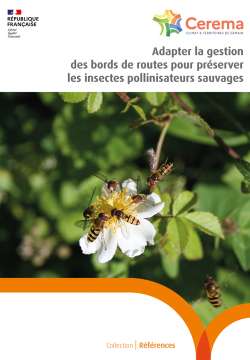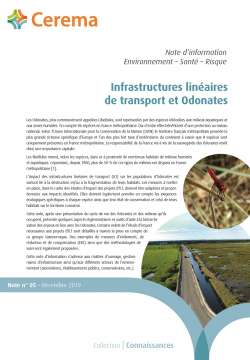
Factsheet no. 05 Linear Transport Infrastructure and Odonata
Odonata, more commonly known as dragon and damselflies, are represented by species dependent on aquatic environments and wet areas. There are 96 species in mainland France. Ten of these are protected nationwide...
Odonata, more commonly known as dragon and damselflies, are represented by species dependent on aquatic environments and wet areas. There are 96 species in mainland France. Ten of these are protected nationwide. The International Union for Conservation of Nature (IUCN) says that mainland France has the largest number of species in Europe and one of the highest endemism rates on the continent, with eight species being present only in mainland France.
France’s position as regards the protection of Odonates is therefore of paramount importance.
The impact of linear transport infrastructure (ILT) on Odonate populations is, above all, related to the destruction and/or fragmentation of their habitats. The measures to be implemented, in the context of linear transport infrastructure project impact studies, must be appropriate and proportionate to the types of impact identified. They must also take into account the ecological requirements specific to each species, as well as their conservation status and that of their habitats on the region concerned.
After presenting the life cycle of Odonates and the environments they occupy, this factsheet presents some regulations to follow and tools to assist with prioritisation of the issues related to Odonates.
- Odonate Ecology
- Odonate regulatory status
- Administrative tools for taking Odonates into consideration
- Methodology for the consideration of Odonates in linear transport infrastructure projects
- Measures: avoidance, mitigation, compensation, support (ERCA)
- Examples of measures to support the most affected species





















